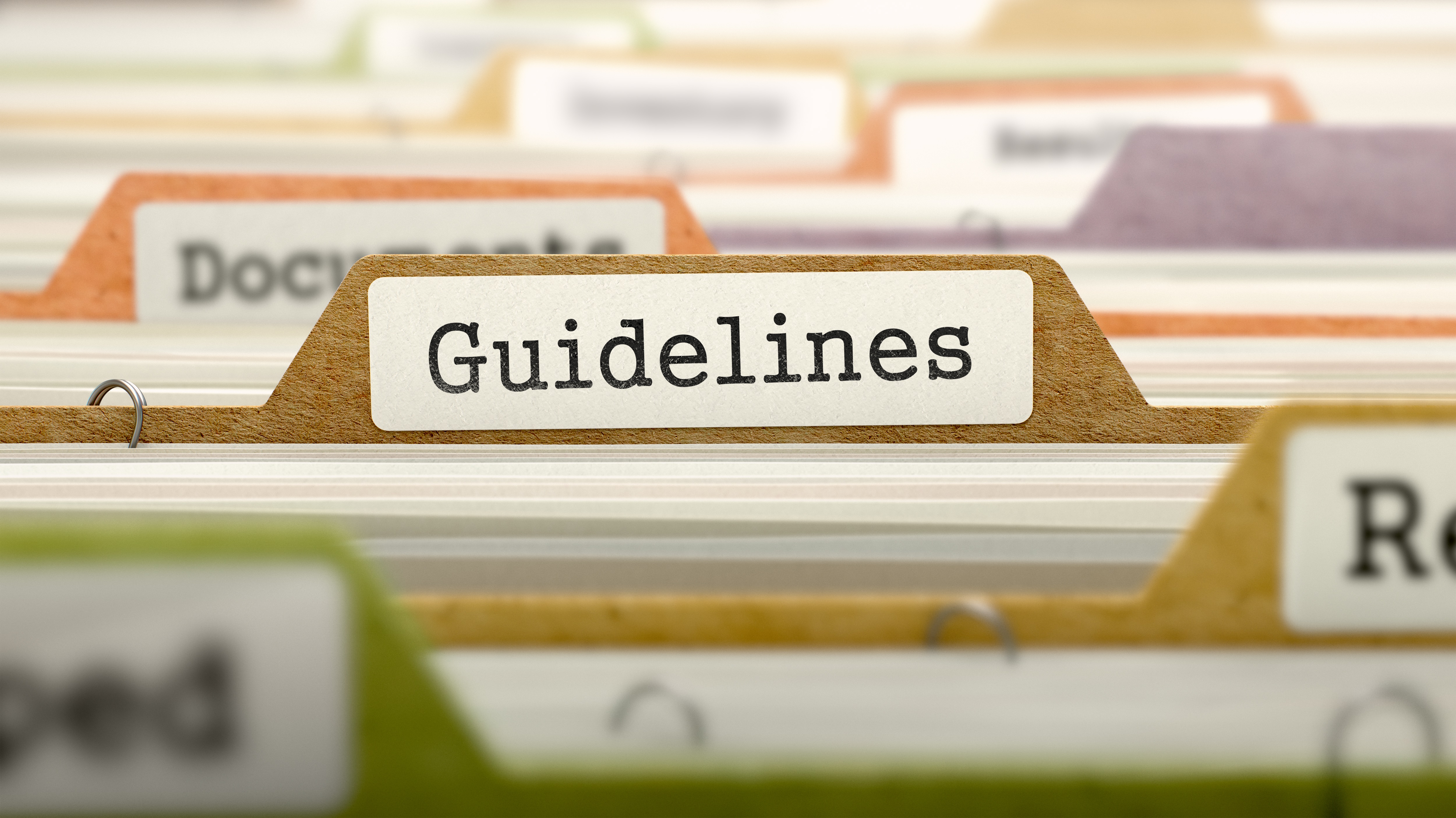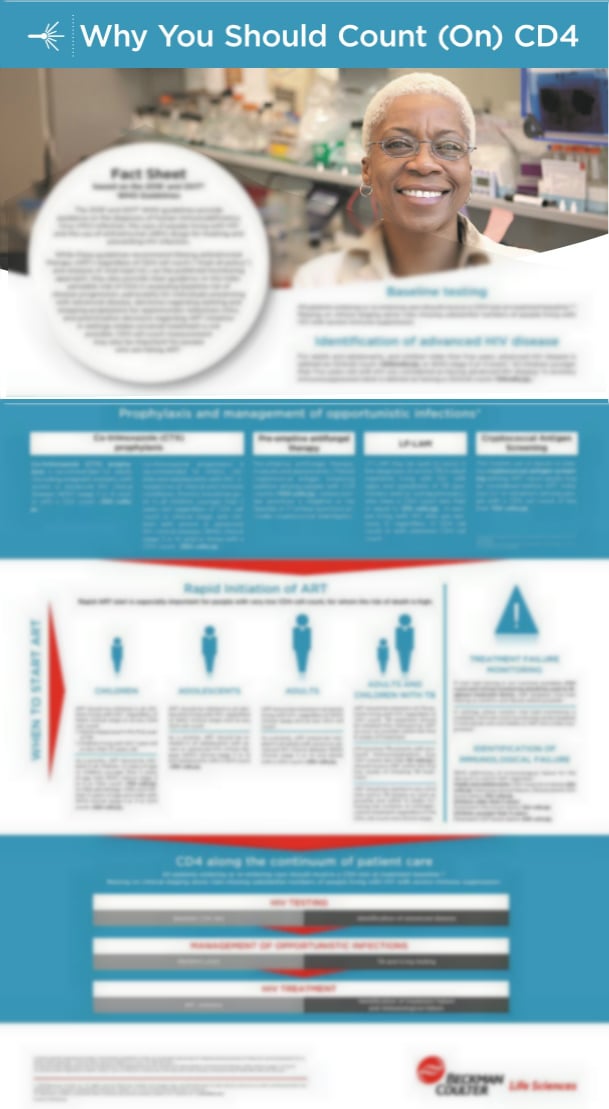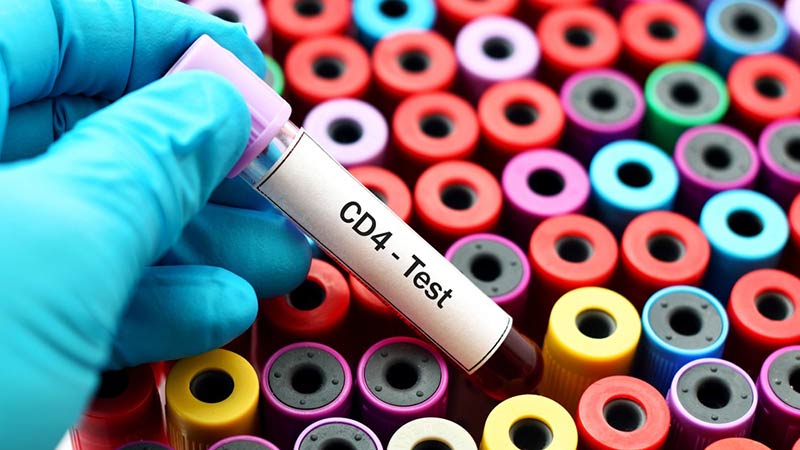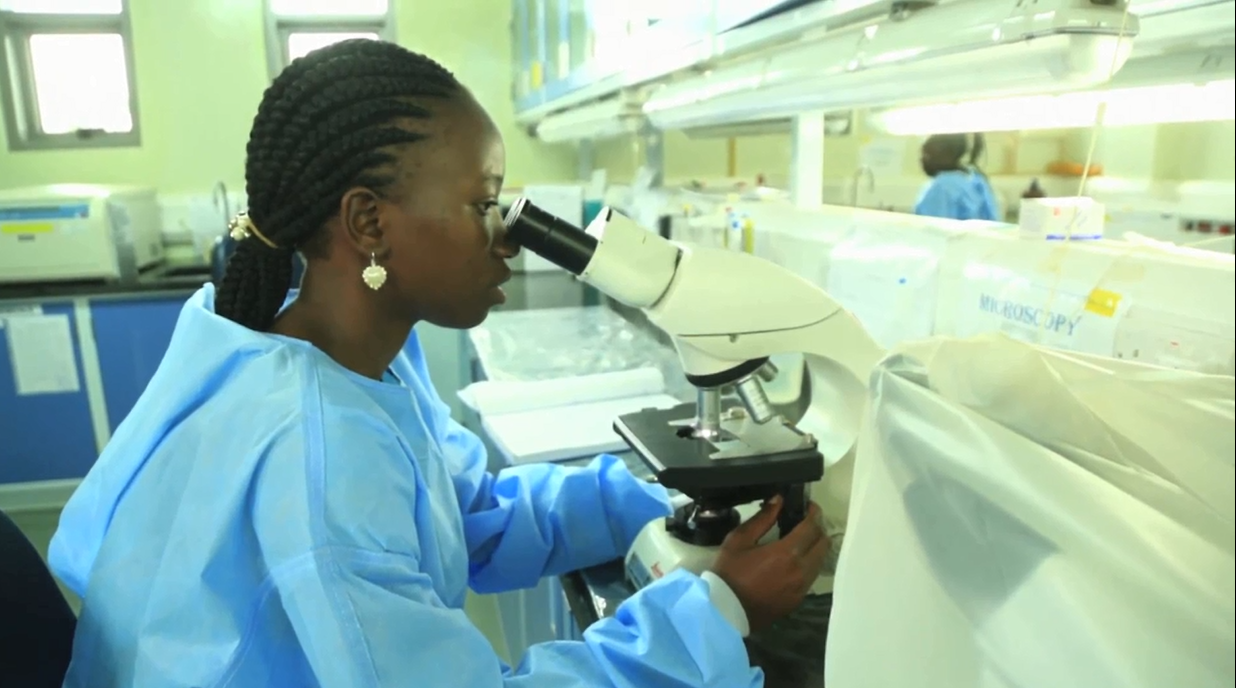Twelve Steps to CD4 Testing
The 2016 and 2017 World Health Organization (WHO) guidelines provide guidance on the diagnosis of human immunodeficiency virus (HIV) infection, the care of people living with HIV, and the use of antiretroviral (ARV) drugs for treating and preventing HIV infection.
While these guidelines recommend lifelong antiretroviral therapy (ART) regardless of CD4 cell count (“treat all policy”) and analysis of viral load (VL) as the preferred monitoring approach, they also provide clear guidance on the indispensable role of CD4 in assessing baseline risk of disease progression — particularly for individuals presenting with advanced disease — decisions regarding starting and stopping prophylaxis for opportunistic infections (OIs), and prioritization decisions regarding ART initiation in settings where universal treatment is not possible. CD4 cell count measurement may also be important for people who are failing ART.

Two documents play a central role:
- World Health Organization (2016): Consolidated guidelines on the use of antiretroviral drugs for treating and preventing HIV infection: recommendations for a public health approach – 2nd ed. https://www.who.int/hiv/pub/arv/arv-2016/en/
- World Health Organization (2017): Guidelines for managing advanced HIV disease and rapid initiation of antiretroviral therapy. https://www.who.int/hiv/pub/guidelines/advanced-HIV-disease/en/
- World Health Organization (2017): What’s new in treatment monitoring:
Viral load and VCD4 testing. Information Note WHO/HIV/2017.22.
https://www.who.int/hiv/pub/arv/treatment-monitoring-info-2017/en/
In addition to the 2016 and 2017 guidelines, WHO published information notes that further define the role of CD4.
While these guidelines recommend lifelong ART regardless of CD4 cell count (“treat all policy”) and analysis of viral load (VL) as the preferred monitoring approach, they also provide clear guidance on the indispensable role of CD4 in the context of:
- Baseline testing
- Identification of advanced HIV disease
- Priorization of treatment initiation
- Rapid initiation of ART
- Treatment failure monitoring in the absence of VL testing
- Identification of immunological failure
- Prophylaxis interventions
- Management of opportunistic infections
- Vaccination schemes
- Adherence support
- Effective laboratory and diagnostic services
The role of CD4 in HIV analysis and patient management is defined by WHO guidelines. Beckman Coulter have condensed these guidelines into a short from pocket book Twelve Steps to CD4 Testing“ which is serialised in the page links.
Fill the form to download Educational wall poster outlining the new role of CD4 in the WHO Guidelines

Twelve Steps To CD4 Testing

WHO Guidelines CD4 Testing
WHO clarifies the role of CD4 in assessing risk for individuals with advanced disease, for prophylaxis for opportunistic infections, and prioritization of ART initiation.
12 Steps to CD4 Testing Part I: HIV Testing
CD4 cell count testing at baseline remains important, because relying on clinical staging alone risks missing people with severe immune suppression.

12 Steps to CD4 Testing Part II: HIV Treatment
People with no contraindication should be informed of the benefits of ART and offered rapid ART initiation, including the option of same-day initiation.


